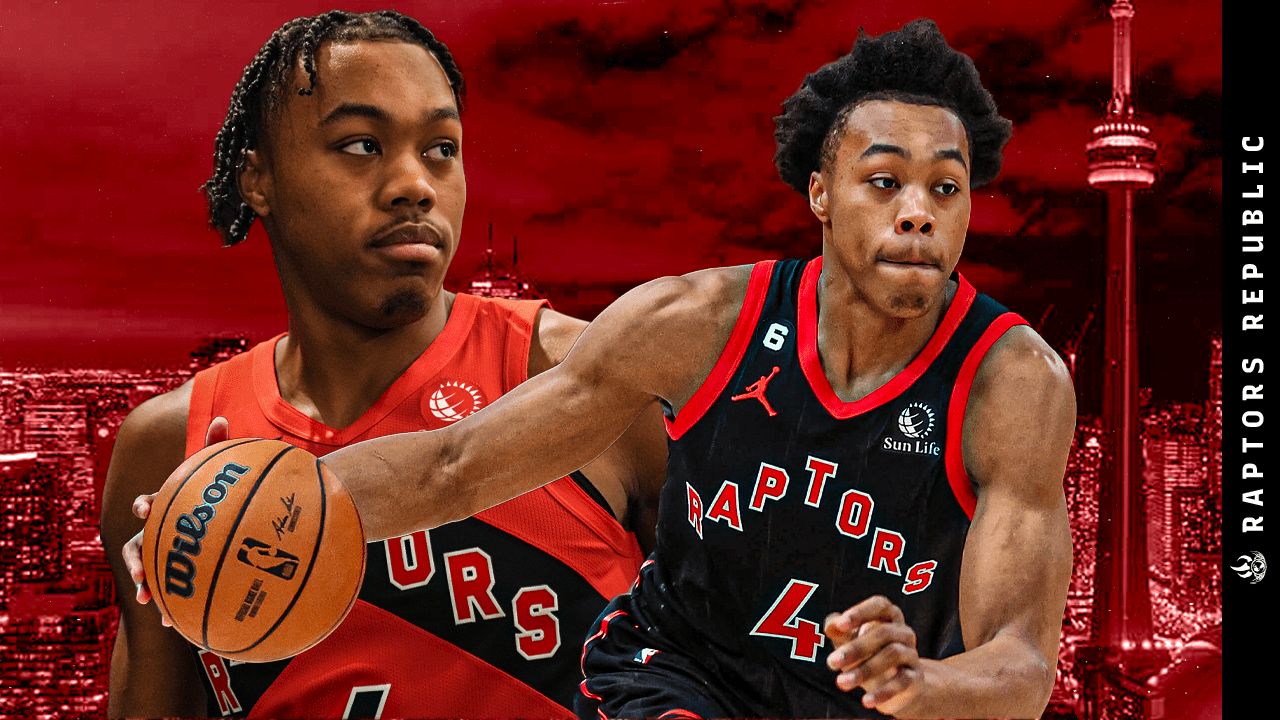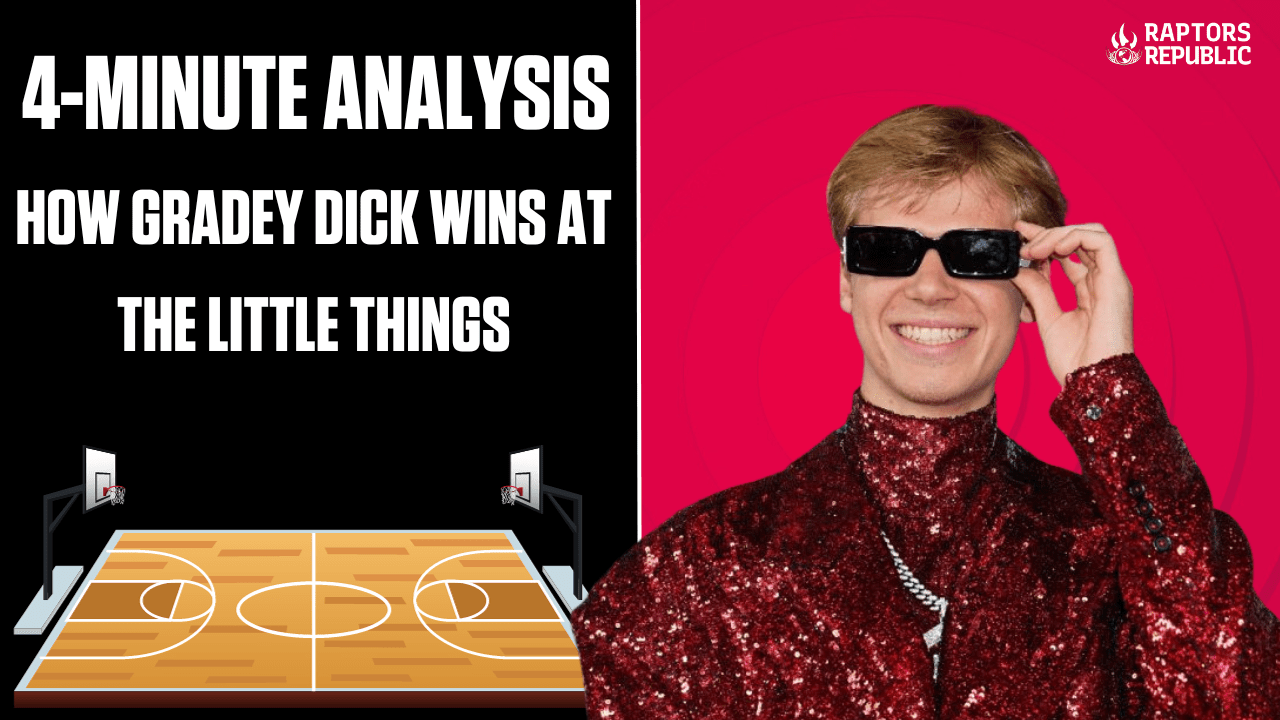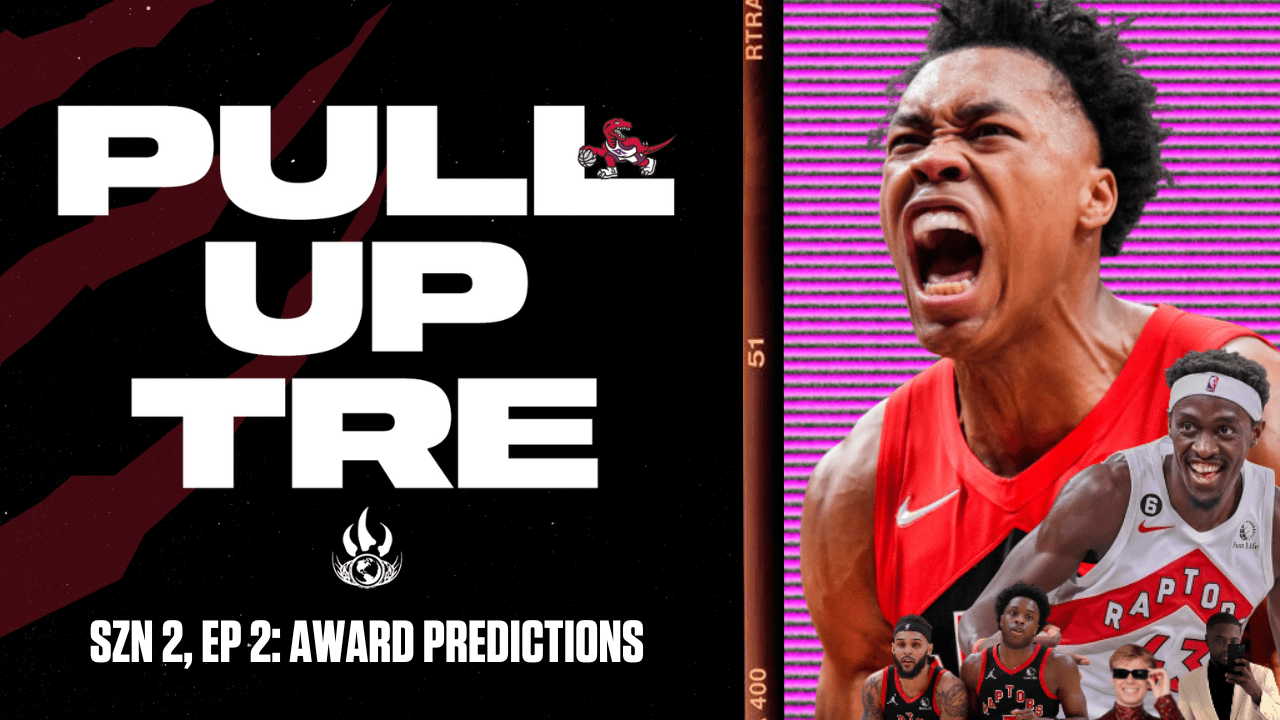If Scottie Barnes does turn into the star for which the Toronto Raptors hope, his game will look much like it has during this preseason.
During preseason, he has been a generalist, less finding a weakness and punching opponents in it over and over than offering death by a thousand cuts. (Some of those basketball deaths delivered, in fact, by cuts.)
Barnes is one of two players this preseason who averaged, rounding up, at least 30 points, 10 rebounds, and 5 assists per 36 minutes. (The other was Bam Adebayo.) In the five preseasons prior, only Anthony Davis, Giannis Antetokounmpo, and LeBron James reached those marks; this isn’t something players can really manage in the preseason unless they are very, very good in the regular season, too. And in his prior two preseasons, Barnes’ own per-36 numbers were significantly lower — particularly in the scoring column, which was just about the same as his regular-season career mark of 15.7 points per 36 minutes. (If you were wondering, by the way, those numbers were virtually identical this year whether Barnes was playing the Cairns Taipans or NBA teams.)
So something has changed for Barnes, or at least appeared to, in Toronto’s introductory four contests.
Barnes is obviously physically gifted, and that is relative to his peers in a league full of players with outrageous, superhuman athletic abilities. Barnes is beyond even that. When he unfurls his enormous wingspan, he casts a shadow on the court like arrows blotting out the sun. He has jumped over opponents for finishes and rebounds, thrown passes over arms that were unable to reach high enough in the air, erased shots at the rim upon which he was seemingly looking down.
A fully optimized Barnes will look and play like an adult against children. He will be larger and stronger and faster than anyone else, and he will find advantages 12 feet in the air that are usually not accessible to wings — err, bigs — err, point guards — err, whatever he is.
Of course, Barnes has always been this big and fast and strong. He has not always been a star as a result. At times, he has only impacted stretches of games, and he admitted both after last season and before this one that he needed to improve his conditioning. Being able to play harder for longer would go a long way to turning his advantages into stardom.
But there is so much more to how Barnes has dominated than through simple physicality. More than anything else, he has made great decisions within his allotted role. (Outside of his turnovers, which have been sloppy at times.) He has almost completely excised shots from within 10-20 feet from his game — they were formerly a big and extremely inefficient part of his diet. His shot chart went from the Raptors last year to Sam Hinkie’s wet dream.
Barnes has also seen his role, on both ends, limited to more specific duties.
It may seem counterintuitive that Barnes is dominating as a generalist even as his role has been made less general, but that’s exactly what happened. Nick Nurse used to ask Barnes to do everything on defense, starting with guarding speedy guards. Darko Rajakovic has limited Barnes to being a big on that end, and he Barnes responded by playing perhaps the best four-game defensive stretch of his NBA career. His block and steal rates were enormous — much higher than he has ever notched in a prior preseason or regular season, and structurally, he was rarely out of position. He was fantastic protecting the rim in help. When Andre Drummond tested him in the post, he stonewalled him.
On the offensive end, Barnes has also been used mostly as a big. He has screened for guards, posted up, and been used as a handoff hub from the elbows. He had great screening chemistry with Dennis Schroder. Because he acted a big, he had 63 percent of his field goals assisted versus 54 last regular season. He also finished like a big, shooting 81 percent from within five feet. This simplification of his role seemingly allowed him to insert himself into the game consistently, rather than drifting for long stretches because sets aren’t run for him. The offense is much more built around Barnes — and in a much more consistent and narrow way. That seems to have benefited him.
When he’s seen shooters flanking him in the corners and drawing defensive attention, he has driven to the rim regardless of his primary defender and finished over contests. The NBA doesn’t track on/off or lineup data during preseason, but Barnes has been particularly successful alongside bench units. Rajakovic has taken Barnes out generally around the 4- or 5-minute mark of the first quarter and re-inserted him almost immediately afterwards alongside bench units. These recreations of Lowry+bench groups have been Toronto’s best (visually, at least, as I don’t have data to back that up), with Barnes surrounded by shooters and cutters at every position. They run and gun and move and generally create the open space and dynamic situations in which Barnes is so brilliant. The success of those groups — and Barnes within them — should be no surprise to anyone.
So context has helped Barnes more than usual. But his skills have also seemingly taken a leap.
Barnes perhaps improved at the two offensive abilities that have most been lacking. He was great at turning the corner with the ball in his hands, pressuring the rim from anywhere on the court — particularly in transition. As a result of Barnes’ aggression throughout entire preseason games, he earned a much higher rate of free throws, 7.7 attempts per 36 minutes, which is more than double his career per-36 minute average of 3.1. Not only has Toronto needed that, but Barnes has generally failed to offer such a skill prior in his career. Barnes has also shot phenomenally well from deep — 50 percent on a beefy 5.7 attempts per 36 minutes. That’s not predictive, of course, going forward. But it’s certainly not a bad thing, and it at the very least has shown us that he is confident in his catch-and-shoot jumper and looking to get it up. Visually, it looks faster and smoother.
There are countless reasons why this is not predictive of certain stardom for Barnes. Remember: Dalano Banton starred for Toronto during the 2022-23 preseason. When everyone is going half speed, enormously athletic players who run 100 miles an hour in transition are facing a more advantageous context. But if Barnes does become a star in the future, it will generally yield the same advantages and results as he did in preseason.
He’ll likely be a big man on both ends, defensively switching only onto guards late in the clock, and initiating plays as a second-side option rather than as a primary point guard. He’ll pressure the rim and space the floor, thus both creating the dynamism and movement that the team needs and being the team’s best punisher within those structures. He’ll throw home-run passes and find cutters — when he isn’t cutting himself. He’ll smash the offensive glass and finish everything he gets his mitts on around the rim.
If you weren’t certain quite what that looks like — until we saw during preseason — don’t be alarmed; there’s not really another player like that in the league. Perhaps Draymond Green, but a significantly better finisher, shooter, and offensive rebounder. Or maybe Domantas Sabonis, but a better shooter, handler, and defender. Maybe you’re thinking Giannis Antetokounpmo but less athletic and a better shooter. There’s no 1:1 comparison. Scottie Barnes is and has always been unique. His stardom, too, will have no father to its style.



